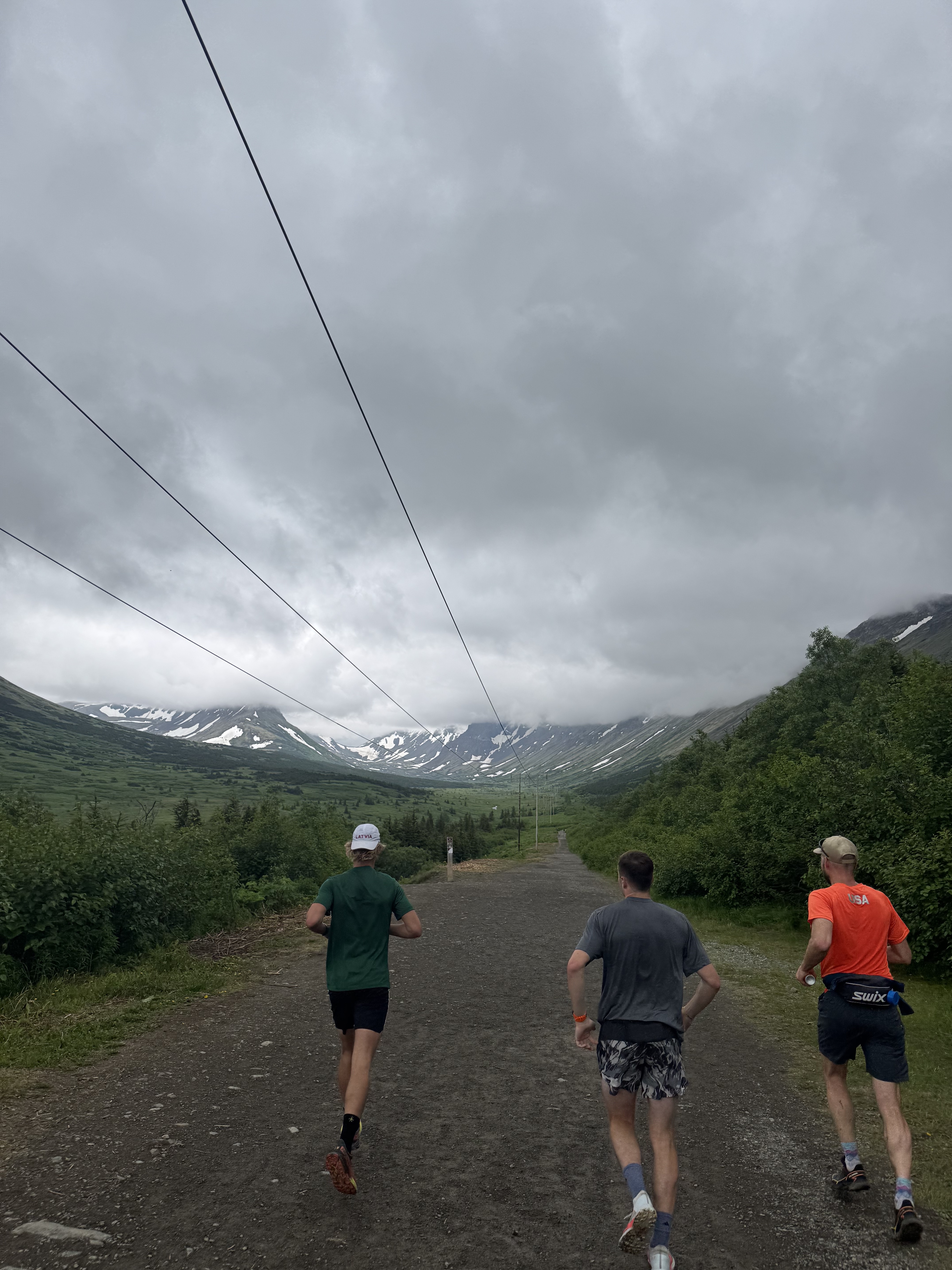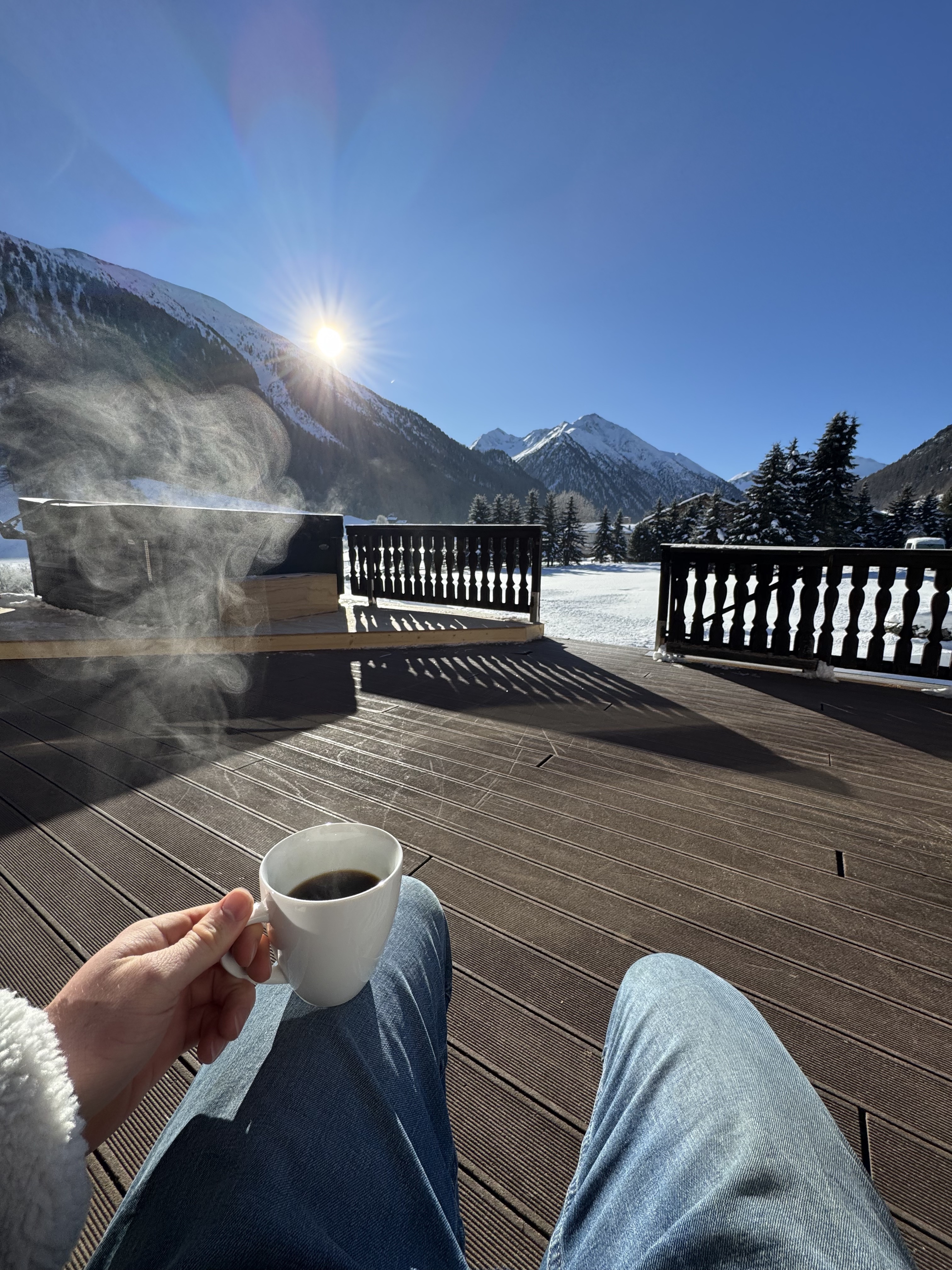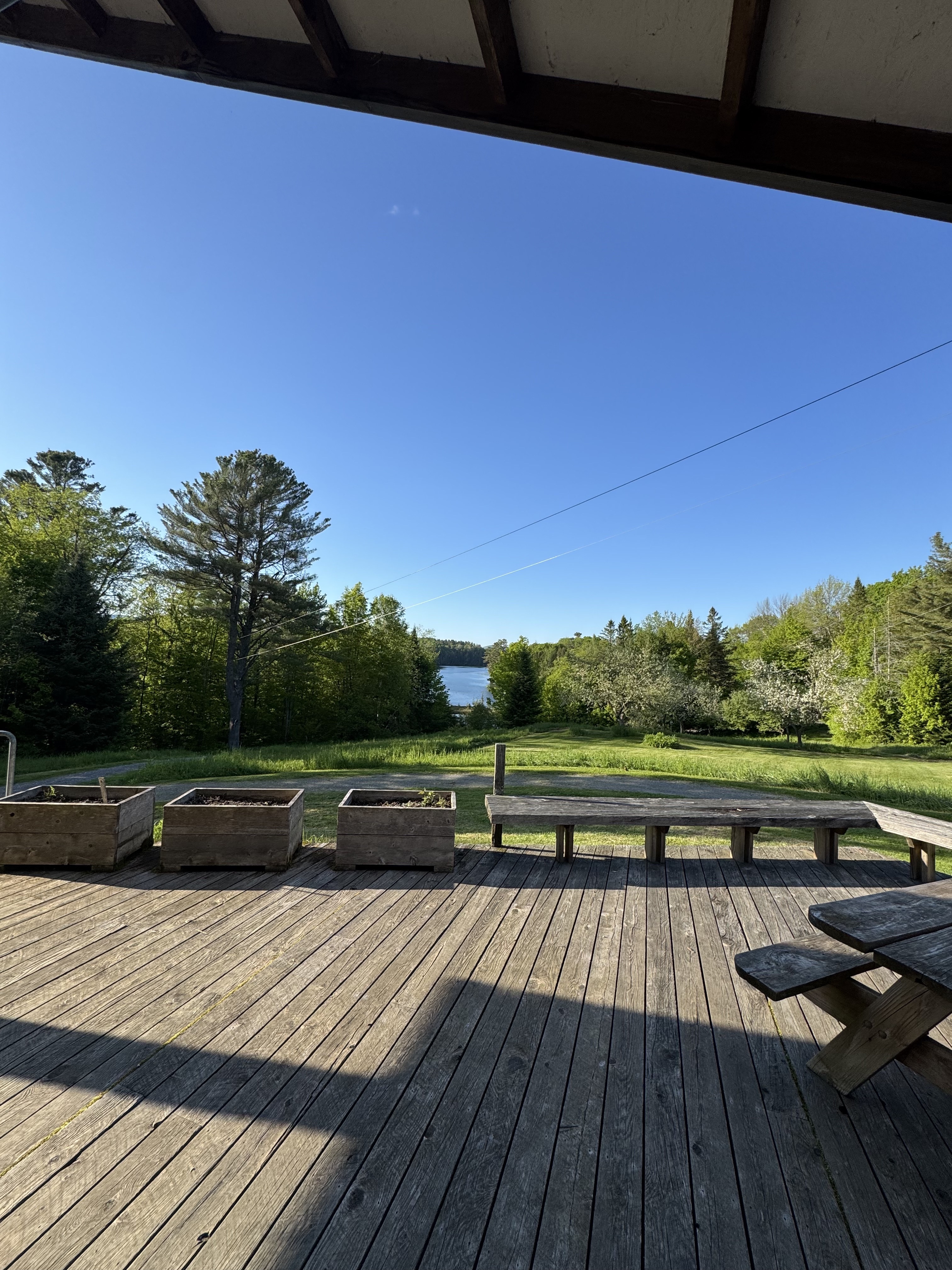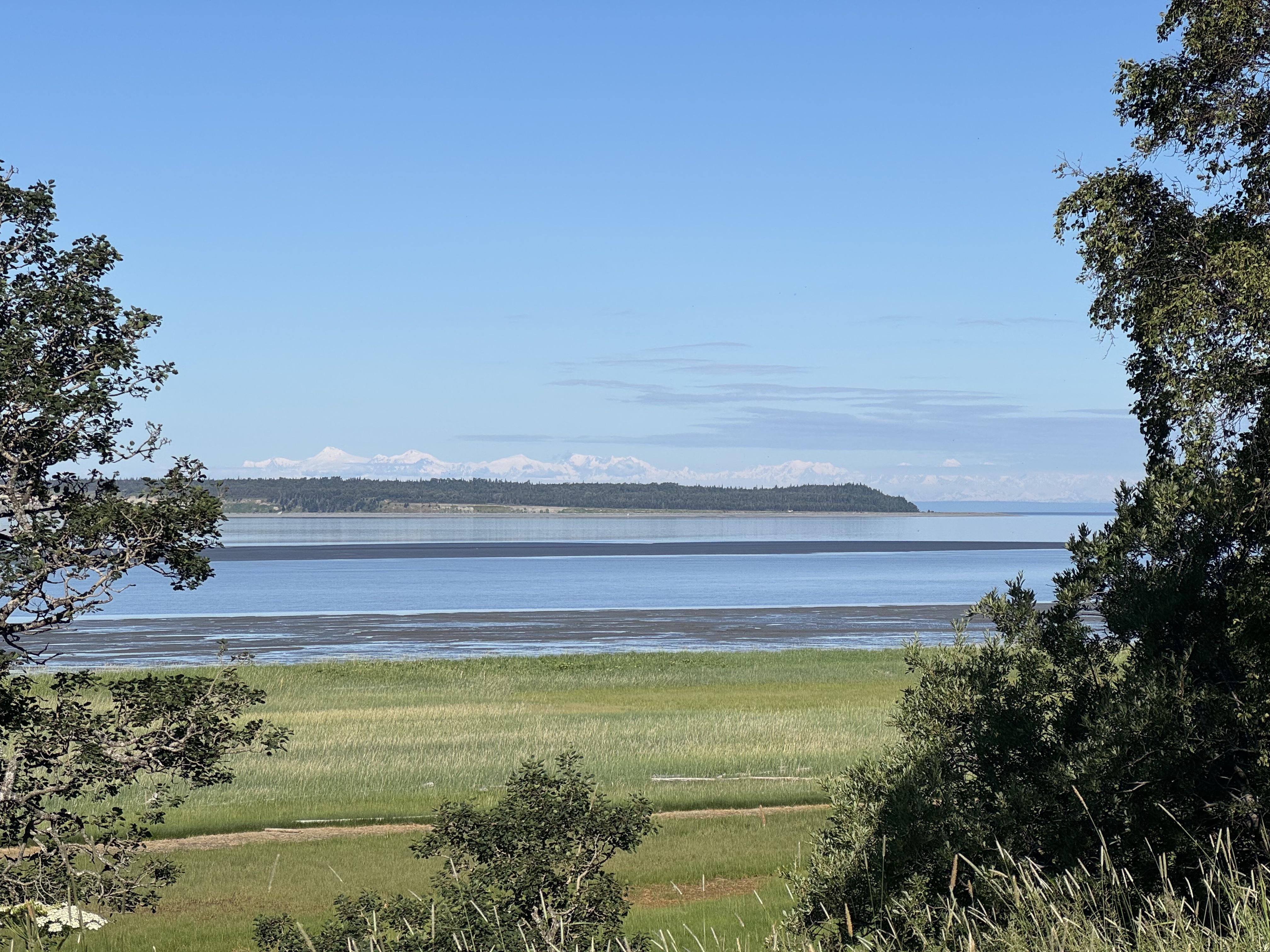Posted by Jack Young: EnjoyWinter Athlete Force on Jul 3rd 2025
Alaska Camp Part 1: New Faces, New Places
The advantages and disadvantages of travelling to training camps
On Monday morning, I began a US Ski Team/APU camp collaboration with a hard double pole workout. I was jet lagged, my whole body was stiff, and I had not gotten enough sleep the night before. Regardless of these factors, I went out there and executed 8x45” of double pole at about sprint qualifier pace as best I could. There are many more drawbacks of travelling to training camps then just feeling a bit off the first day upon arrival. So, as I embark on this two week dryland/snow camp, we could ask: why do we even travel to training camps in the first place?
I had a conversation with Jason Cork, Jessie Diggins’ coach, last fall at a training camp in Park City where he outlined the reasons a training camp may be useful. According to him, what it boils down to is that training camps are useful to provide an athlete with something that they do not have access to at home. The list could include: snow, altitude, rollerski tracks, exposure to other athletes and/or coaches, or even to avoid boredom. It may seem obvious that if an athlete is gaining something on this list that a training camp is clearly worthwhile, but whenever you leave home you are inherently losing other training factors. This leaves an athlete to do some sort of cost-benefit analysis whenever they are planning on leaving home for an extended period of time. All this being said, since I am currently a long ways from home at a training camp, here’s some of the reasons I chose to attend:

Running just outside of Anchorage
Snow
Access to snow is by far the most enticing part of this camp. Five years ago, the facility up on Eagle Glacier was damaged in an earthquake, and it has taken since then to complete the rebuilding project. I am beyond grateful to get to use the new facility. Getting to ski on snow in the summertime provides a huge boost to a cross country skier’s training, for it is much more effective to work on the technical aspects of the sport on snow than on pavement. Additionally, I was not able to attend Bend camp in the spring, so any hours I can get in on snow are most welcome.
Training with Other Athletes
At this camp, we have three of the four athletes who started the sprint at World Champs in Trondheim last year–Me, JC Schoonmaker, and Gus Schumacher. There is no lack of top end speed on the Green Racing Project this year, but there is still a lot of value to be had in getting to train with the very best in the country for a couple of weeks. Beyond this, there is a lot of value in seeing how a different club approaches summer training. A unique part of this camp is that we are simply joining APU for two weeks. There is no original USST team plan in place, so I have a chance to learn about how a group other than the GRP or USST structures and executes training.

Post Tour de Ski altitude camp in Livigno
Altitude
Since Eagle Glacier rests a little above 5000’ above sea level, it is at least worth mentioning the impact that altitude has on this camp. First of all, altitude is definitely not a benefit of this camp. In order to get a significant benefit from altitude, one would need to spend at least two weeks training and sleeping up high; we’re only spending one week on the glacier. Because of this, I would classify the altitude of the glacier as a drawback of this camp. However, with proper intensity management the first couple of days on the glacier, it shouldn't be too much of a problem.
With my two main reasons for attending listed alongside a partial drawback, this next part is focused on detailing the other side of the cost-benefit analysis. These drawbacks are not unique to this camp and are applicable to just about any training camp that requires considerable travel.
Cost
I don’t want to ignore the issue of the cost of travelling to training camps. I have the luxury of being fully supported by both the GRP and the USST, so cost does not factor into any of my decisions about travel. However, this may be an important part of someone else’s cost-benefit analysis, for this sport is already pretty darn expensive without scheduling extra trips.
Travel
Long travel days necessitate time off from training. During a travel day, you are unable to train, but you are also not really recovering. This means that the day(s) leading up to long travel should be taken easier. Additionally, the day after travel can be somewhat compromised. A few days of subpar training may not seem like a major problem, but pursuing a sport at the elite level requires questioning any decision that compromises any days of training. Beyond this, illness is of course a primary concern of travel. Steps can be taken to remedy this, but at the end of the day, the more you travel, the more likely it is that you will get sick.
Sleep + recovery disruption
One of my favorite things about being home–home being the Craftsbury Outdoor Center nowadays–is my various routines. Everyday at home, I can have exactly what I want for breakfast, I can make a grilled cheese right after I finish training in the morning, and I get to eat amazing lunches and dinners at the dining hall at the outdoor center. Although recovery and nutritional needs are generally met at training camp, it never feels as easy as it is at home. The same goes for sleep. Depending on the camp, sleeping situations can be a mixed bag, and they almost always are worse than what you have at your permanent residence. Although I have a couple strategies for minimizing disruptions such as earplugs and a sleeping mask, my best sleep always occurs at home.

Home sweet home
Missing standardized, repeatable, or familiar sessions
One of the reasons I live and train in Craftsbury is because I love training there. The rollerski loop is quite good for a variety of types of sessions, the Craftsbury area has some of the best dirt road running and gravel riding in the country, and I love running and hiking in the green mountains. When I travel somewhere else for the purposes of training, I inherently lose out on the sessions I could have been doing at home. Missing standardized sessions is particularly harmful if the training plan revolves around them. Since my plan isn’t focused on these types of sessions, missing two weeks of sessions in Craftsbury isn’t too large of a drawback.
Danger of overdoing it
This is the last and possibly the least concerning drawback of camps in general for me because of how within my control it is to avoid it. However, the less comfortable you are in the new training setting you find yourself in, the more likely you are to train a little bit faster than you should. Athletes may feel social pressure, or the pressure of being watched by different coaches that leads them to push harder than is beneficial. In the end, this shouldn’t ever be a reason not to go on a trip but instead should be a consideration to take once you are there.
Thoughts on my upcoming camp/travel schedule:
June 29th-July 14th: Anchorage with APU/USST
August 15th-September 11th: Oberhof (Ski hall) + Ramsau (Glacier) with GRP
September 30th-October 20th: Park City with GRP/USST
November 17th-??: Muonio and beyond
This is by far the most travel I’ve ever done in a summer and fall which makes me both excited and nervous. For each of these training camps, I have thought hard about what is to be gained versus lost by attending, so here are some of the main reasons I’m comfortable with the upcoming schedule:
Ample time at home between camps: In general, I have a good period of time to settle down in Craftsbury between each camp. The turnaround time between Ramsau and Park City is a little bit tight, but it is still almost three weeks which gives me more than enough time to get back into the swing of things at the outdoor center. The main goal here is to always feel like I have a home and that I am not spending enough time on the road that the road starts to feel like home.
Travel plan agrees with the GRP training plan: This makes intuitive sense since two of the camps are in fact GRP camps, but this point was hugely important when I was making travel decisions in the beginning of the summer. There are no awkward periods of travel in conjunction with extremely hard blocks of training.
No risk of getting bored in Craftsbury: This amount of travel makes it nearly impossible for me to get bored of being in Craftsbury. This really isn’t on my mind anyway because I like being there so much, but it's worth noting as I included boredom as a reason to go on trips in the first place.
Focus on getting quality, on-snow intensity: This is the biggest reason why the GRP trip to Europe makes a lot of sense. Eagle Glacier will be an excellent place to refine technique with the USST coaches and get some really good volume in, but the combination of being tired from the dryland week in Anchorage and the altitude will make getting quality intensity sessions tricky. Speed sessions in Oberhof (2700’) will be very productive especially because the plan is to be very rested coming into that week of training.

View from the Anchorage Coastal Trail
Concluding Thoughts
Although these are my thoughts on travel at this point in my life, I would be surprised if they don’t change at all in the future. Every athlete’s individual circumstances factor into whether a given training camp will be beneficial, and one could only assume my priorities will shift as I age. However, regardless of how priorities shift, I believe that success in this sport at least partially comes from making detailed plans based on well-thought out, clear headed decisions. I hope I can continue to perfect how I plan travel with these decisions.
Stay tuned for part two where I will share my thoughts on training in Anchorage!

